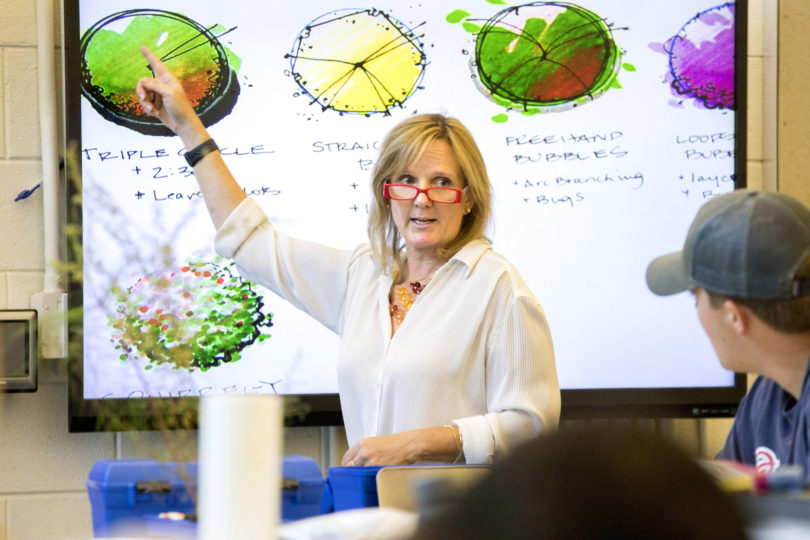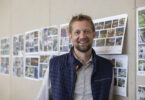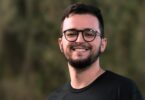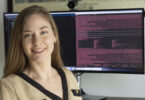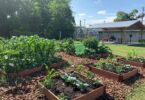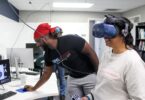Ashley Steffens, an associate professor in the College of Environment and Design, helps students gain the practical skills they need to be successful in the profession of landscape architecture, which she describes as a fusion of science and art.
Where did you earn degrees and what are your current responsibilities at UGA?
I earned my Bachelor of Environmental Science degree from the University of North Carolina Asheville and my Master of Landscape Architecture degree from UGA.
I am an associate professor in the College of Environment and Design. I teach graphics, design studio, applied engineering and plant ID in the Bachelor of Landscape Architecture program.
When did you come to UGA and what brought you here?
I came to UGA in 1991 to attend graduate school in landscape architecture. The MLA program was (and still is) one of the highest ranked programs in the country, but I was particularly interested in UGA’s MLA program because it focused on environmental issues that related to my undergraduate degree in environmental science.
What are your favorite courses and why?
I enjoy all of the classes I teach because they are all connected in different ways. For instance, I teach computer graphics but also use those applications in the design studio. I teach plant ID and can use that information to discuss how to draw textures in hand graphics and how to design with plants in the design studio.
What are some highlights of your career at UGA?
I have always loved traveling. Teaching at UGA has provided numerous opportunities for me to travel with study abroad programs and to attend conferences in Europe, China, Central and South America and extensively across North America. More recently, I was very honored to be elected as president for the Council of Educators in Landscape Architecture, which has over 120 institutional and individual memberships from around the world.
How do you describe the scope and impact of your research or scholarship to people outside of your field?
Most of my research has followed my teaching career. I started teaching computer graphics back in the mid ‘90s. At that time, professional landscape architecture firms were transitioning from hand graphics to computer, primarily AutoCAD, and so it was extremely “profitable” for students to graduate knowing how to use it. As time went on, other applications became increasingly popular within the profession, and I began surveying interns and firms on what they were using for graphic production in the office environment. It allowed me to stay up to date with technology in the classroom and better prepare students for the profession. Eventually, Photoshop and SketchUp played larger roles in the design process, and I was able to provide statistical information that supported the addition of these programs within the curriculum.
Several years later, I was asked to teach hand graphics and by that time, rumors were swirling around that hand graphics were outdated and unnecessary. My surveys started to ask if the profession still valued hand graphics, and if so, why and how did they use it in the office environment. To this day, hand graphics experience, almost more than computer graphic skills, are what firms want to see in student portfolios. Primarily because there is a different thought process that goes on when sketching and there are fewer limits to graphic communication when you design by hand (compared to what you might know how to do technologically).
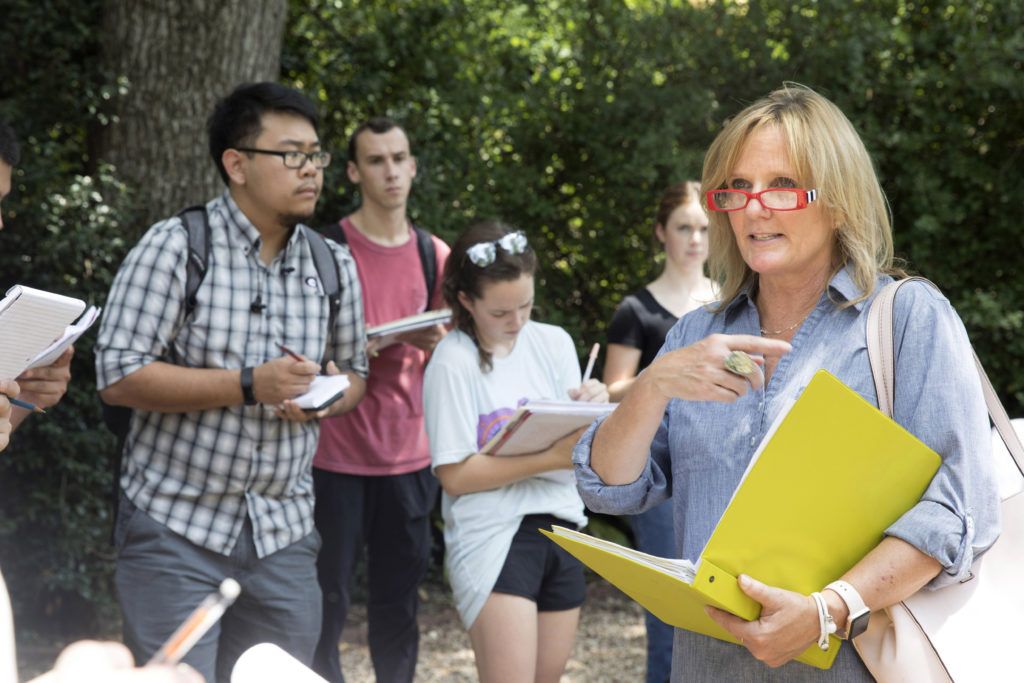
Associate professor Ashley Steffens teaches a plant identification class in the Founders Garden. (Photo by Dorothy Kozlowski/UGA)
How does your research or scholarship inspire your teaching, and vice versa?
My research on graphics has supported all the classes I teach because all of them require a certain amount of graphic communication, and I am able to better explain to students how and why I teach certain skills based on professional needs/interests.
What do you hope students gain from their classroom experience with you?
I hope students gain the practical skills they need to be successful and feel confident in the profession, an appreciation for their own strengths and weaknesses and some insight into how awesome our profession is. Landscape architecture is incredibly diverse. It involves investigation, discovery and creating problem solving skills to address environmental, social and economic factors. It is a fusion of science and art.
Describe your ideal student.
My ideal student is anyone interested and willing to learn about what I’m teaching.
Favorite place to be/thing to do on campus is…
I like my office. It’s quiet, so I can be productive and it’s close to downtown so I can grab something to eat or meet friends for coffee or dinner. On campus, I enjoy being outside when the weather is nice, watching people or strolling through campus and looking at plants, design and how people interact with spaces.
Beyond the UGA campus, I like to…
I like to work in my yard, spend time with my family and friends, and travel.
Community/civic involvement includes….
I have always had a strong sense of community and civic engagement, traditionally through my kids’ schools and activities but also professionally through service-learning projects that include educational gardens and school campus designs, projects with the Jekyll Island Authority and other state parks, as well as with nonprofits.
Favorite book/movie (and why)?
One of my favorite books, especially related to my career, is “The Alchemist,” because it’s about the journey of finding your destiny through achievements and sometimes failures. I never really knew what I wanted to do professionally. What I have found is that my career has been a series of very fortunate events, even when it wasn’t exactly how I wanted or expected something to go. The important thing is to keep moving forward and look positively toward the opportunities that lie ahead.
The one UGA experience I will always remember will be…
Outside of the day I got hired and the day I found out I made it through promotion and tenure, coming on the Cortona Study Abroad Program as a graduate student. I didn’t have enough money to go, so I sold my car and saved up as much money as I could. Once I got to Cortona, I pressed roadside flowers and scavenged scraps of marble from the sculpture area that were like little treasures. Memories of beautiful scenery, incredible art, taking siestas in the heat of the day and fabulous food were my souvenirs. I’ve been back three times as a faculty member, and being in Cortona is still an incredible experience.
(Originally published Sept. 16, 2018)


